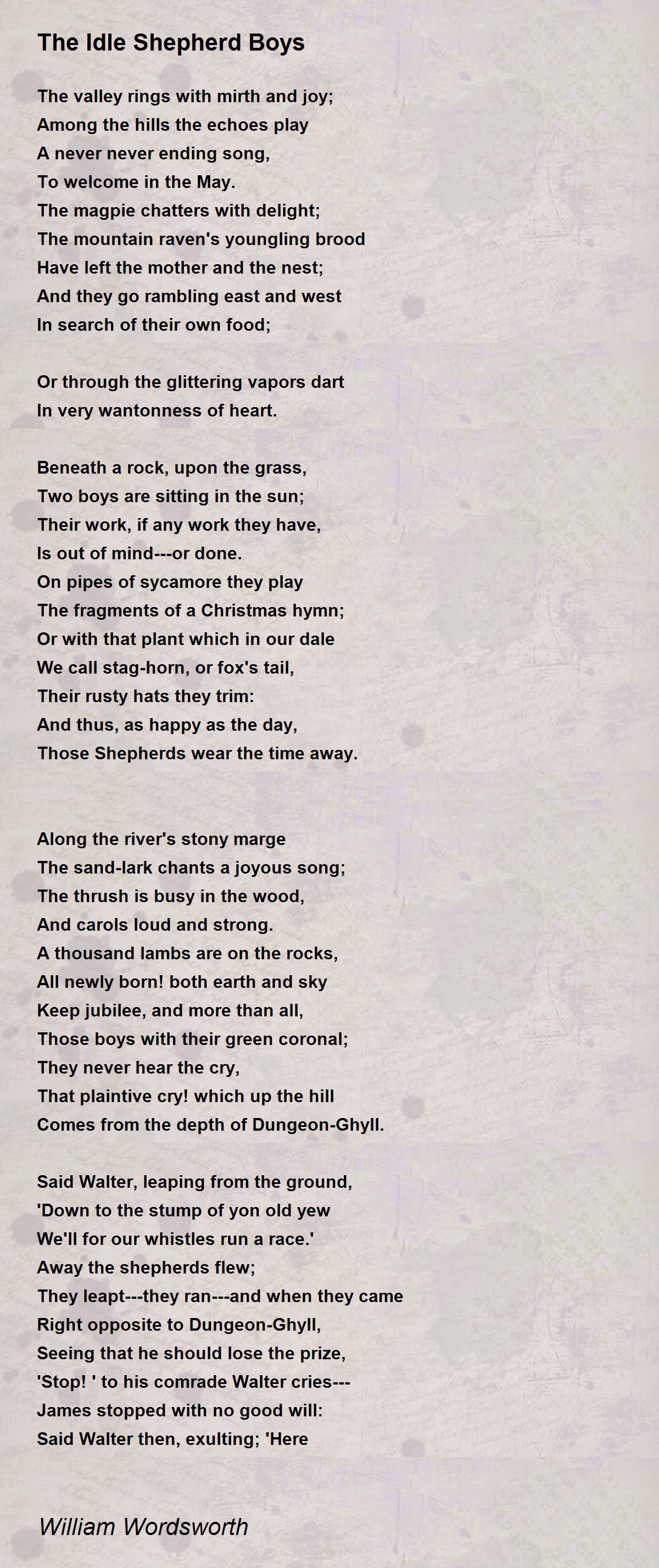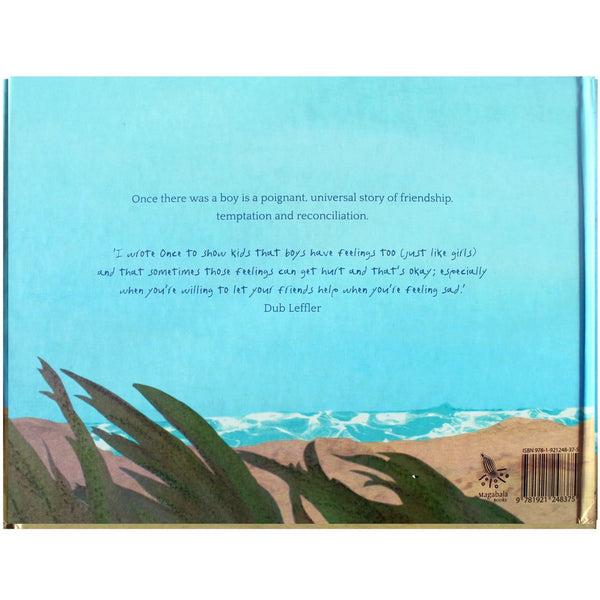
It was the first Of those domestic tales that spake to me Of shepherds, dwellers in the valleys, men Whom I already loved -not verily For their own sakes, but for the fields and hills 25 Where was their occupation and abode And hence this Tale, while I was yet a Boy Careless of books, yet having felt the power Of Nature, by the gentle agency Of natural objects, led me on to feel 30 For passions that were not my own, and think (At random and imperfectly indeed) On man, the heart of man, and human life Therefore, although it be a history Homely and rude, I will relate the same 35 For the delight of a few natural hearts And, with yet fonder feeling, for the sake Of youthful Poets, who among these hills Will be my second self when I am gone Beside the brook Appears a struggling heap of unhewn stones! And to that simple object appertains A story-unenriched with strange events Yet not unfit, I deem, for the fireside, 20 Or for the summer shade. 5 But, courage! for around that boisterous brook The mountains have all opened out themselves And made a hidden valley of their own No habitation can be seen but they Who journey thither find themselves alone 10 With a few sheep, with rocks and stones, and kites That overhead are sailing in the sky It is in truth an utter solitude Nor should I have made mention of this Dell But for one object which you might pass by, 15 Might see and notice not.

However, in the earliest version, which you will be looking at here, Wordsworth writes as if he is the boy calling to the owls.If from the public way you turn your steps Up the tumultuous brook of Greenhead Ghyll You will suppose that with an upright path Your feet must struggle in such bold ascent The pastoral mountains front you, face to face. Wordsworth went to school with him and later followed him to Cambridge. We think it is based on a boy Wordsworth knew called William Raincock who was well known as an owl-mimic. This is a piece of poetry about childhood. Sponsored Links There was a Boy ye knew him well, ye cliffs And islands of Winander!–many a time, At evening, when the earliest stars began To move along the edges of the hills, Rising or setting, would he stand alone, Beneath the trees, or by the glimmering lake And there, with fingers interwoven, both hands Pressed closely palm to palm and to. There was a Boy ye knew him well, ye cliffs And islands of Winander!–many a time, At evening, when the earliest stars began To move along the edges of the hills, Rising or setting, would he stand alone, Beneath the trees, or by the glimmering lake And there, with fingers interwoven, both hands Pressed closely palm to palm and to his mouth. Select Search World Factbook Roget s Int l Thesaurus Bartlett s Quotations Respectfully Quoted Fowler s King s English Strunk s Style Mencken s Language Cambridge History The King James Bible Oxford Shakespeare Gray s Anatomy Farmer s Cookbook Post s Etiquette Brewer s Phrase & Fable Bulfinch s Mythology Frazer s Golden Bough All Verse. There was a Boy ye knew him well, ye cliffs / And islands of Winander! many a time, / At evening, when the earliest stars began / To move along the edges of the hills, Casabianca is a poem by British poet Felicia Dorothea Hemans, first published in the New Monthly Magazine for August 1826.

Original poem reprinted online here: Boy at the Window by Richard Wilbur.


There was a boy wordsworth full size#
For non-spambots, to see the full size of the scanned analyzed poem, right click the picture and open it up in a new tab. Probably not the best place to find the best analysis for your paper/exam/question, but you ll read this too late. There was a Boy ye knew him well, ye cliffs And islands of Winander! many a time, At evening, when the earliest stars began To move along the edges of the hills, Rising or setting, would he stand alone, Beneath the trees, or by the glimmering lake And there, with fingers interwoven, both hands Pressed closely palm to palm and to his mouth. There are few rhyming schemes here and there but it. Poetry analysis: There was a boy by William Wordsworth The poem, “There was a boy” by William Wordsworth, illustrates an insight of the interaction between human and nature through the incident that the “boy” experiences when having a “jocund” conversation with the owls and reflecting in the lake.


 0 kommentar(er)
0 kommentar(er)
